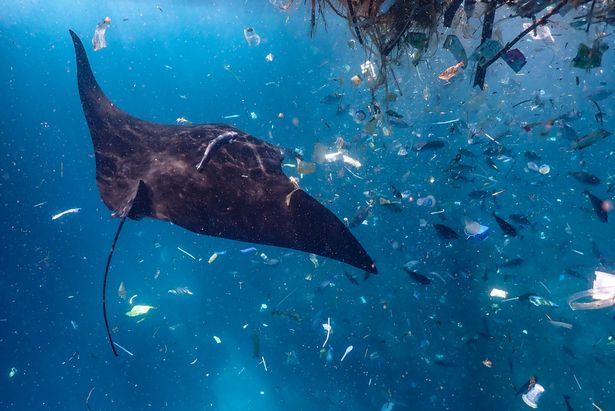Scientists examining the devastating
impact plastics are having on the world's oceans have identified seabirds with more than 250 man made objects lodged in their stomachs.
From bottle tops to pen lids, the flesh footed shearwaters are thought to consume more
plastic than any other marine animal.
Often mistaking plastic objects floating in the sea for food, the adult birds pick them up and then feed them to their young, with disastrous consequences.
Researchers working on Lord Howe island, off the coast of Australia, where the flesh footed shearwaters nest, claim that on average every chick has between 30 and 40 pieces of jagged plastic in their stomachs before they are fully fledged.
But in one case scientists found a young bird with 260 separate items of plastic stuck in its gut.
Even if the seabirds survive to leave the nest, the weight of the plastic resting in their stomach, means they are often too heavy to take off and many drown in the surf around the island.
The shocking impact that pollution is having on the sheerwater population is revealed in a BBC documentary, Drowning in Plastic, which is being broadcast a year on from the landmark Blue Planet II series.
Presented by Sir David Attenborough, Blue Planet II, was credited with raising international awareness of the threat posed by plastic pollution.
It was also thought to be responsible for The Queen’s decision to ban plastic bottles and straws from the Royal estates.
In this latest BBC film, wildlife biologist, Liz Bonnin travels around the world to highlight the growing crisis facing the marine environment.
She visits a group of scientists who have spent the last 12 years examining the world's largest colony of flesh footed shearwaters in the Tasman Sea.
Around 40,000 birds migrate to Lord Howe island each year to lay their eggs in burrows deep inside the rainforest.
Researchers believe the birds consume more plastic than any other marine animal, the equivalent of a human eating around 10 kilograms.
Dr Jennifer Lavers, who leads the project, said the situation has worsened even in the last decade.
She said: “The numbers have fluctuated, but definitely more and more of the birds have plastic in them and we are finding and increasing number of birds that are more heavily affected.
"Quite a number of years ago the average numbers of pieces of plastic per bird may have been closer to five pieces per bird but now it is more likely to be closer to 30 or 40 pieces per bird, so things are shifting."
By studying the impact this has on the birds, scientists hope they will learn more about how plastic could be harming all sea life.
In the documentary the team can be seen pumping the stomachs of shearwater chicks and recovering a whole array of large and sharp plastic objects.
But as well as the physical damage the objects cause to the birds, scientists claim they have now found evidence that suggests the chemicals in the plastic are interfering with the birds' hormones.
Over 200 marine species have been found to ingest plastic and work is being carried out to establish why.
One theory, revealed in the documentary, is that algae growing on the surface of the plastic gives off a smell that attracts fish and other sea creatures.
Tiny bits of plastic suspended in the water are thought to be mistaken for fish eggs, while plastic bags are often eaten in the belief that they are jellyfish.
The film also looks at the impact of microplastics on the Arctic, examining how its presence in the food chain can be found all the way from plankton up to walruses.
Charlotte Moore, Director of BBC Content said: “BBC One continues its mission to uncover the devastating impact plastics are having on our oceans in this special film that looks at one of the most significant and important environmental crises of our time.”







